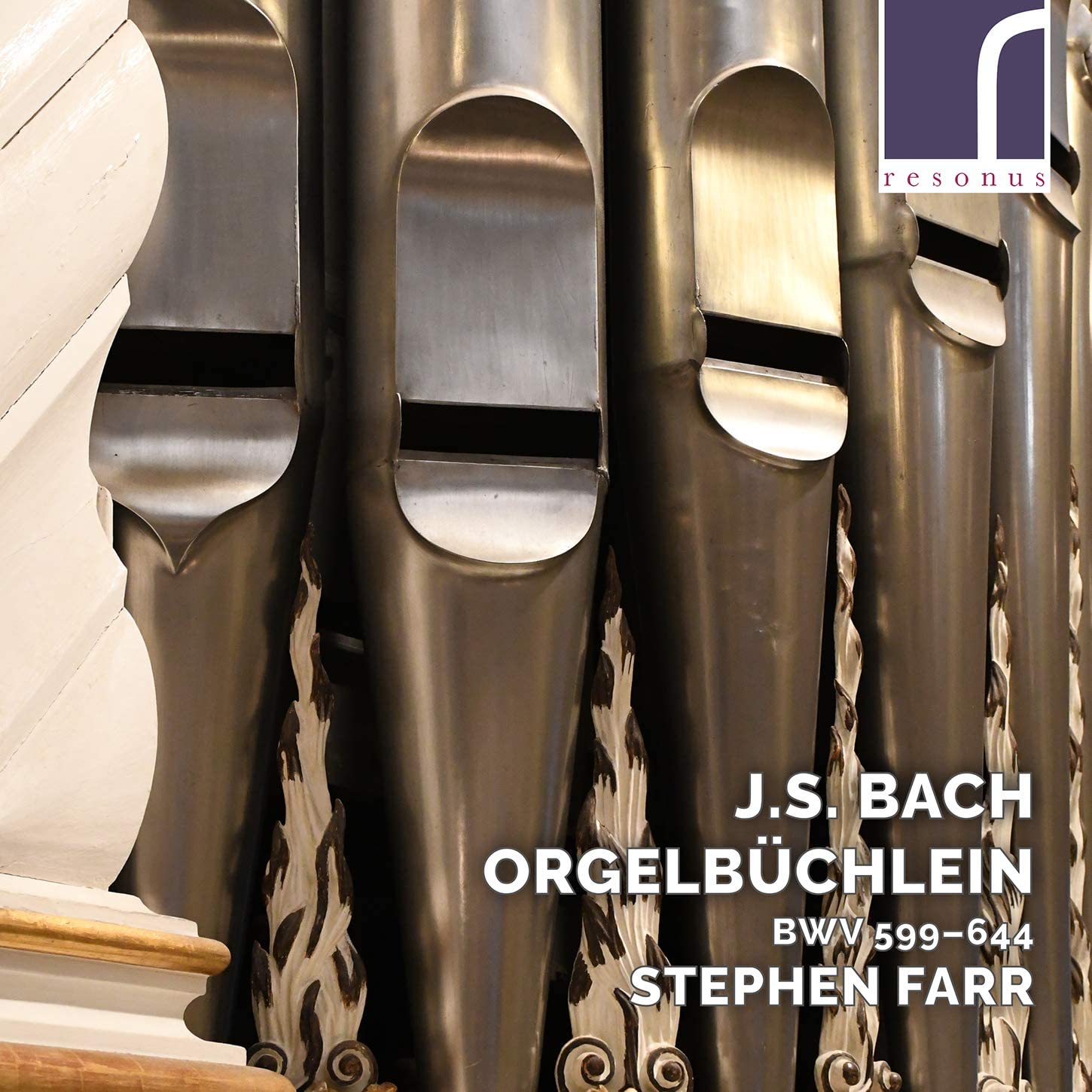Stephen Farr (T. H. G. Trost organ, Stadtkirche Waltershausen)
79:02
Resonus Classics RES10259
Click HERE to buy this on amazon.co.uk
In the time of lockdown, music that echoes an underlying structure that is bedded into our subconscious seems somehow more necessary. The philosophical and mathematical sides of Bach’s creative genius provide patterns of order and stability that give confidence to those who feel all at sea in the present uncertainties, so a new recording of Bach’s Orgelbüchlein starts with an advantage. In the Orgelbüchlein, Bach uses the framework of the Lutheran liturgical year to order a number of exercises on the myriad different ways in which to prelude the Lutheran chorales appropriate to the seasons of the year and major themes of Lutheran piety, and listening to all 46 tracks of Stephen Farr’s CD in just under 80 minutes provides a patterned experience that has its own satisfying internal logic, though the surviving numbers in the Orgelbüchlein represent only a fraction of the 164 pieces that were planned, as the many blank pages in the autograph attest.
What sort of pedagogical exercise is this? The preludes range from the relatively simply structured if elaborate pieces where the chorale melody is clearly heard at the top of a polyphonic texture like BWV 601 Herr Christ, der ein’ge Gottes-Sohn or 625 Christ lag in Todesbanden through the more elaborately decorated works such as BWV 622 O Mensch bewein or BWV 634 Liebster Jesus, wir sind hier to the even more complex or inventive BWV 608 In dulci jubilo or BWV 629 Erschienen ist der herrliche Tag, where the chorale – heard in canon at a bar’s distance – is given a kind of acoustic echo. Then there are those that use an ostinato phrase like BWV 615 In dir ist Freude or BWV 637 Durch Adams Fall to punch out the key theme or the more complex canonical structures of BWV 611 Christum wir sollen loben schon with the chorale in the alto and free-running imitation in the other parts or BWV 624 Hilf Gott, dass mir’s gelinge with its additional obbligato line in running triplets from beginning to end under the chorale in canon at the fifth. Some have reminiscences of Pachelbel’s chorale variations like BWV 632 Herr Jesu Christ, dich zu uns wend’, or Bach’s own trio sonatas like BWV 639 Ich ruf’ zu dir. All this gives an infinite variety as well as stretching the organist’s technical capabilities.
As always, Stephen Farr’s playing is faultless; but his choice of instrument here doesn’t make it easy for him. Instead of a more compact and responsive instrument such as was available to Bach in Weimar during the time when the bulk of the Orgelbüchlein was written, he chose the large (and somewhat unwieldy) organ by Trost that dates in the main between 1724 and 1730 in the more developed Thuringian style where many ranks clearly have to be coaxed into speech.
This famous instrument, conserved in the 1990s and sampled for Hauptwerk, gives him almost unlimited tonal and aural possibilities, and the large number of 8’ ranks in every department can be used either singly or in combination to give subtle shades. And the slow-speaking Pedal can cause problems on certain notes, and he quite often needs to couple it to the Brustwerk to aid its clarity. The booklet gives the specification and detailed registration for each piece, which is splendid and there is additional information available on www.organartmedia.com/en/heinrich-gottfried-trost. In his notes, he admits that the organ is hard to play, and makes a good case for his performance choices. The booklet is a model of clarity and information and sets Farr’s realisations within the performance tradition well presented in Nigel Simeone’s essay.
As always with Stephen Farr’s recordings, this is model of how to do it, and those who have his Clavier-Übung III on the Trinity Cambridge Metzler or the Chorale Partitas on the Sussex house organ by Aubertin will need no further encouragement to get this outstanding CD.
David Stancliffe
